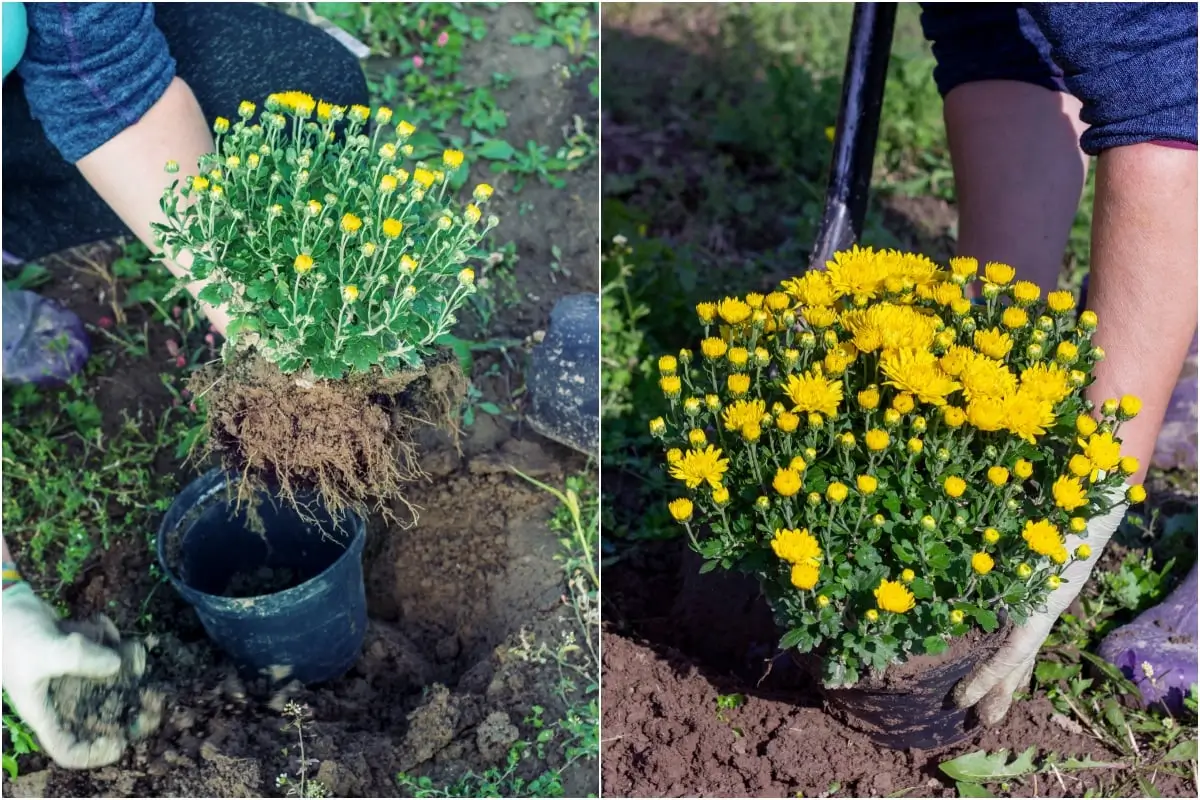You love those bright, bold chrysanthemums in fall — but what if they lasted beyond one season? When you learn how to winter over mums, you can have the same plants blooming year after year, instead of tossing them out.
This guide will walk you through four approaches, plus tips for spring care and summer upkeep. Let’s get your mums ready to survive the cold and shine again next fall.
Start with Healthy Plants
If you plan to carry your mums through the winter, don’t wait until fall to make decisions. Begin as soon as you bring them home:
- Pick a vigorous plant. Avoid mums already weakened by pests or disease.
- Go for size. Skip tiny six-inch pots — larger, sturdier plants have a better chance of lasting.
- Begin care early. Feed, water, and monitor from the start so the plant is strong heading into dormancy.
Choosing well now gives you a better shot at success later.
Four Strategies to Winter Over Mums
You have several paths to protect mums through winter — each with pros and cons. You can choose whichever works best for your space and climate.
| Method | How It Works | Pros & Challenges |
|---|---|---|
| Plant in ground | Remove from pot and bury in garden soil | Best chance to survive but requires transplanting |
| Plant in ground, leave in pot | Bury the pot itself in the soil | Easier to move but still protects roots |
| Bring indoors | Move potted mums into a cool, dark, dormant spot | No digging, but you must maintain correct environment |
| Shelter outdoors | Keep plants in place and insulate heavily | Low maintenance but higher risk of winter damage |
Below, I’ll break down how to do each.
1. Bury Them in the Ground (Remove Pot)
This is the most reliable approach for long-term success:
- Pick a spot that gets 6–8 hours of sun and has well-draining soil.
- Dig a hole slightly larger than the pot.
- Loosen the roots gently, place the plant in, and backfill the hole.
- Add compost and then mulch (3–4 inches of leaves, straw, wood chips).
- After blooms fade, trim stems to 4–6 inches above soil and mulch over again.
- In spring, remove mulch gradually, repot if needed, and resume regular care.
This method gives the roots room to grow and the plant hardiness to improve.
2. Bury the Pot Itself (Plant in Ground While Potted)
If you like displaying mums in decorative pots but still want winter protection:
- Bury the pot (with the plant inside) flush with the surrounding soil.
- This burial buffers temperature swings and shields roots.
- In spring, carefully dig out the pot, repot or freshen soil, and place it where it can get sun.
This gives some of the protection of in-ground planting but retains portability.
3. Bring Them Inside
If you don’t want to dig in your yard, bringing them indoors can work:
- Cut the plant back to 4–6 inches.
- Store it in a cool, dark space (garage, cool basement, or unheated shed) so it goes dormant.
- Water sparingly (once a month or so). Overwatering will rot roots.
- In spring, repot, reintroduce light gradually, and move back outside.
This method is low effort in terms of soil work, but you must monitor the indoor environment.
4. Shelter Outdoors with Mulch Insulation
This approach means minimal movement but maximum insulation:
- After blooming, cut back stems to 4–6 inches.
- Position the pot or plant near a building wall that gets warmth.
- Lay down a thick mulch bed (8–12 inches) of straw, leaves, or chopped branches.
- Cover the entire area and plant with burlap or a breathable cover to hold mulch in place.
- In spring, remove mulch gradually, uncover the soil, and check for new growth.
This is a “set and forget” style, but the success depends heavily on your climate and how well-insulated the mass is.
Spring & Summer Care
Once winter is past, your mums need a little extra attention:
- Repot or refresh soil. Replace old media to give roots nutrients.
- Sunlight & watering. Aim for 6–8 hours of sun and water when the top inch of soil is dry.
- Fertilize. Start with a nitrogen-rich fertilizer early to boost leaf growth, then switch to a bloom formula later.
- Pinch back buds. In July, remove first buds to encourage more branching and fuller shape.
- Shape & prepare. By August, your mum should have lots of closed buds, ready for fall color.
With consistent summer care, your mums will be strong and healthy heading into another winter.
Quick Troubleshooting & Tips
- Mulch matters: Be generous with insulating material — cold damage often comes from exposed roots.
- Check for rot: Especially with indoor or moist environments, overwatering in dormancy kills more mums than frost.
- Mouse or rodent damage: In heavy mulch setups, critters sometimes nibble at stems — use wire mesh if needed.
- Start small: If you’re new to wintering perennials, try this with one or two mums before committing your whole patch.
Your Chrysanthemum Legacy
If you winter over mums successfully, you transform what was once a seasonal décor into a lasting part of your garden. Instead of purchasing fresh mums each fall, your established plants reward you with blooms every year with less effort.
Let your mums become a favorite fixture — less wasteful, more sustainable, and more beautiful with every season.
